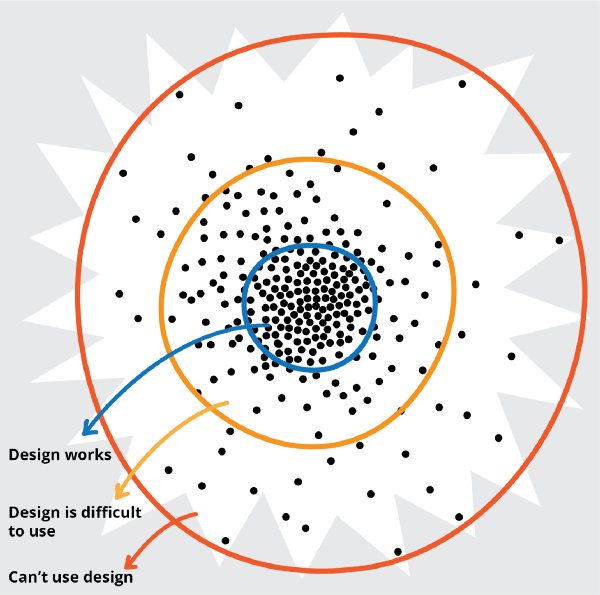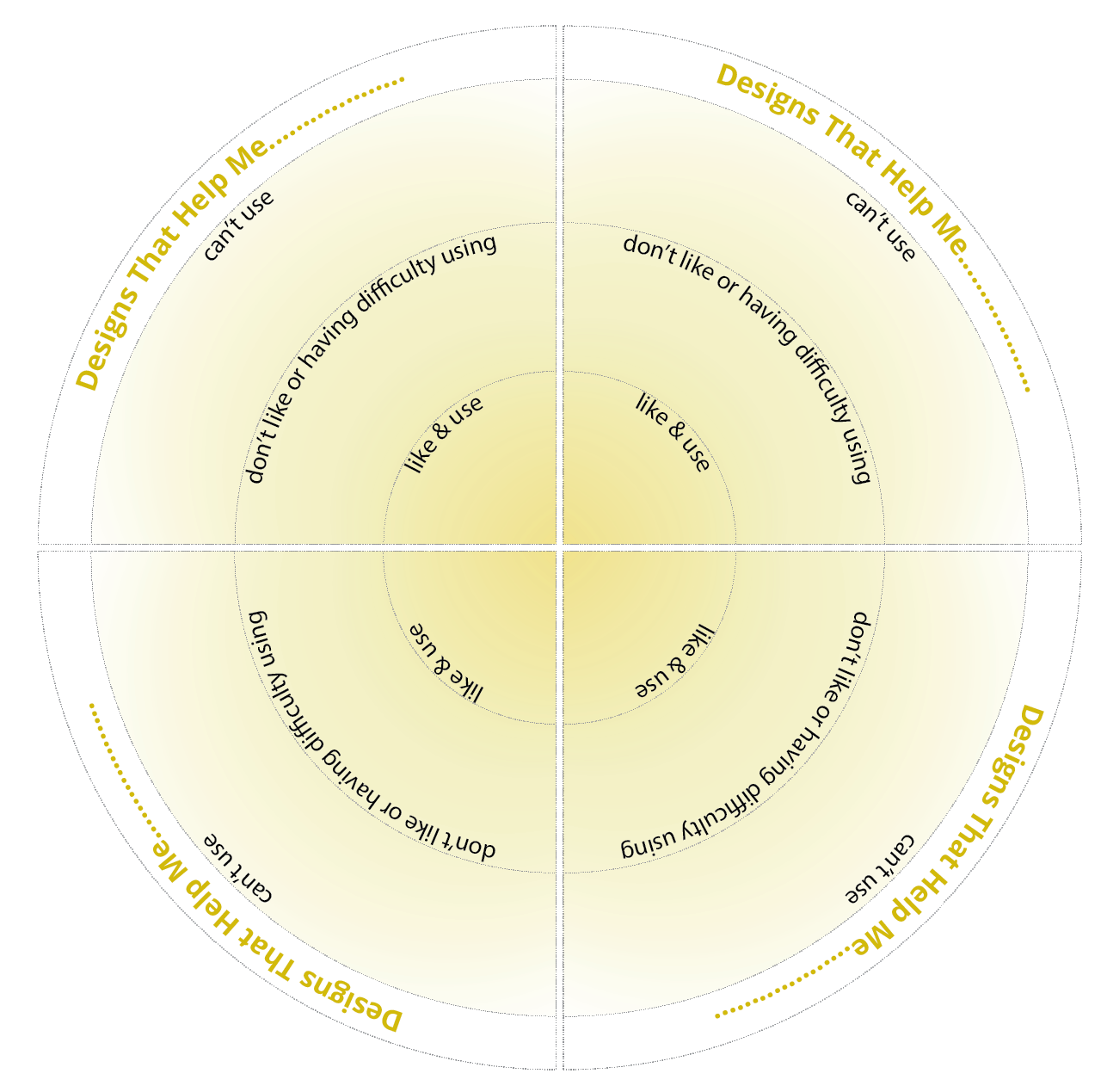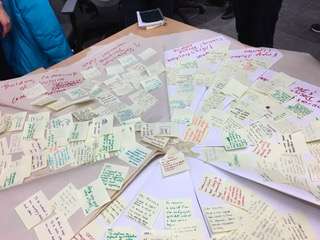Virtuous Tornado
Introduction — Innovation at the Edges
When we have limited time and resources, we tend to follow the 80/20 rule; to tackle the 80% (majority needs) first, and leave the most difficult 20% (minority needs) for later. However, change and innovation are found at the margins. Designing for the 20% might take more time and resources at first, but it will be dynamically resilient and adaptable, and will also cost less in the long term (read more at If You Want the Best Design Ask Strangers to Help).
This activity helps to break away from the 80/20 rule to consider more diverse perspectives and needs. You can try this activity when designing something new or when critiquing an existing design. It is most effective when a diverse set of co-designers, including people who presently have difficulty using the design or can't use the design, are active participants in the process. Before you begin, ask: who are we missing?
Consider a scatter-plot of the needs of any group of people. Everyone brings a variety of different ways of being and working, different skills and needs to the table. Consider where you might lie on the starburst when using a particular design.

Figure 1: The starburst plot shows a denser set of dots (representing the majority needs) in the centre, and more widely spaced dots the further you get from that centre (the minority needs). Distance represents difference. The closer the dots the more similar they are. The wider they are spaced from each other the more they differ. Design innovation happens at the outer edges.
Identifying Needs - Mapping it Out
Consider and note the following for your design:
- The needs and characteristics of those who can use the design
- The needs and characteristics of those that have difficulty using it
- The needs and characteristics of those that can’t use the design
Map all of these needs and characteristics onto wedges or facets as shown in Figures 2 and 3. Use as many facets as you need to map all the needs and characteristics that you can think of. Place the needs that are met, representing people who can use the design with ease, in the center of the map. Place partially-met needs in the middle zone, representing people who have difficulty using the design. Place any unmet needs, representing people who cannot use the design, in the outer periphery of the map. Remember to consider your own needs in the process!
If you find it helpful, you can group the needs and characteristics into common themes and place these on individual facets; this can help your team realise additional needs that may be associated with each theme. This grouping is not essential, and where you place each need is not critical - as long as the process you choose allows you to consider as many needs as possible.

Figure 2: Template for mapping needs and characteristics in the context of a given design.

Figure 3: An example of mapping needs and characteristics onto the wedges of a circle.
Iterating on the Design - The Virtuous Tornado
Rather than moving toward a single design solution, inclusive design is an iterative process that expands a design to encompass more possibility, more means of access, and more inclusive dimensions. This activity will help your team address the needs that you have identified in the previous mapping activity, and plan for future design iterations.
You can start small; each time you circle around and up the spiral you will be stretching the design to encompass more and more needs, and moving outward toward the edge of the starburst. At each cycle of iteration, ask “who are we missing?” Bring in another person, another scenario, another set of needs and characteristics. Plan as many iteration cycles as possible. You will sustain the availability and the accessibility of prior iterations, but continue to stretch out to create a more generous design. If you are able to change your design to meet the needs of at least one additional person, you are moving in the right direction.
In your groups, instead of competing to find the single best design, try coming up with a diversity of choices. If you are working in multiple groups, sharing with the larger group after each iteration can help to generate more ideas. You can adapt this process as needed to any particular group and particular needs and you can use whatever materials are available.
Consider solving not only for the specific design challenge, but also consider changes to your implementation or process that will improve the ability to solve future challenges. In this way your design will become more adaptable and it will be easier to widen the range of needs and characteristics that it can meet in the future.

Figure 4: The virtuous tornado describes an upward spiral into which needs and characteristics are injected at each design iteration. As the design moves up the spiral it expands to encompass these needs, becoming more and more inclusive in the process.